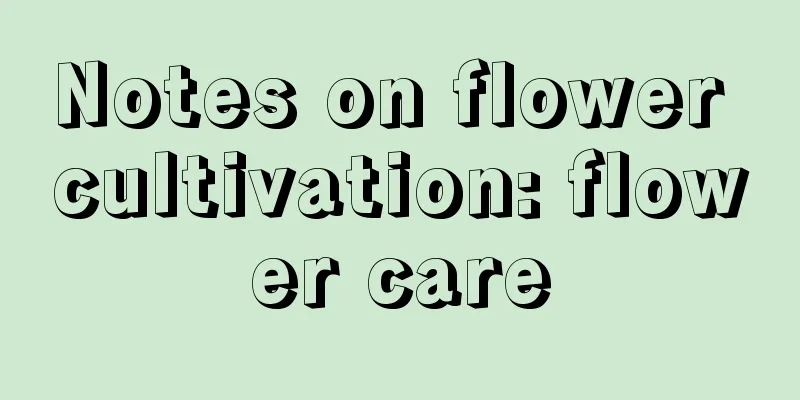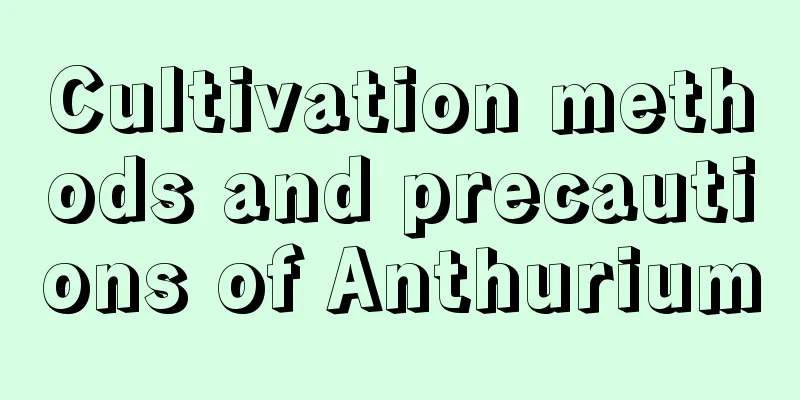Notes on flower cultivation: flower care

Summer and winterThe suitable growth temperature for most flowers is 15-25℃. If the temperature exceeds 40℃ or is lower than the minimum temperature that different flowers can tolerate, the flowers will be harmed. Safe summerThe high temperature and strong sunlight in summer often make some temperate plants unable to adapt to the heat and make some shade plants susceptible to sunburn. Therefore, when growing flowers at home, you can use methods such as shading, ventilation, spraying water, and adjusting the position of potted flowers to improve environmental impacts, lower the temperature, and allow flowers to safely survive the summer. Safe winteringFrost and freezing damage in winter have a great impact on the growth of flowers. Some flowers that are not cold-resistant will die due to frost. In autumn, plants are still in the growing season, and some flowers will suffer damage to their leaves and buds once the first frost occurs. In spring, after dormancy, plants begin to sprout and release leaves. If they are hit by late frost at this time, the damage will be very serious. During the Frost Descent period, flowers that are easily damaged can be protected by covering them with soil or film in garden cultivation. Potted flowers on the balcony can be protected by a plastic shed built against the south wall. When it is very cold in the evening, the roof and surrounding areas should be covered with woven bags or sacks to keep them warm. For balconies that have been enclosed with glass, cold-sensitive plants such as Milan, hibiscus, Christmas cactus, Impatiens, and Croton should be moved indoors and covered with transparent plastic bags to protect them over the winter. In order to increase the cold resistance of flowers and trees in winter, watering should be controlled, but water should still be added in time depending on the situation. Due to negligent management, flowers grown at home often dry out and die in winter. Pest controlWhen it comes to preventing and controlling diseases and insect pests in flower gardens at home, we should follow the principle of "prevention first". Strengthen management, improve ventilation conditions in the growing environment, do a good job in fertilizer and water management and pruning, so that flowers and trees can grow healthily, enhance their own resistance to diseases and pests, and promptly remove dead branches and leaves to prevent the spread of diseases and pests. PestsChewing pests It harms roots, stems, leaves, flowers and fruits, causing notches, perforations and holes to appear on the affected parts. Such as caterpillars, caterpillars, longhorn beetles, crab larvae (beetle larvae), etc. Use stomach poisons and contact pesticides such as diazinon, trichlorfon, pyrethroids, and phoxim. Absorption Pests Pests use their mouthparts to penetrate the plant and suck out the sap. Such as aphids, scale insects and red spiders (mites), etc., the stems and leaves damaged by them will show symptoms such as spots, shrinkage and discoloration. Use contact and systemic pesticides for control, such as dimethoate and chlorpyrifos. DiseasesFungal diseases: When attacked by fungi, mold and powdery substances can be seen growing on the host surface. Symptoms include sudden wilting, damping off, spots, scabs, mildew, and wilting. The main drugs used are carbendazim, thiophanate-methyl, and thiophanate-methyl. Bacterial diseases: Caused by bacteria, leaves develop water-soaked, translucent spots that are restricted by leaf veins. Tender organs become necrotic, slimy and smelly. The diseased stems show signs of wilting, and the vascular bundles can be seen turning brown when cut cross-sectioned. The main drugs used are: Jinggangmycin, agricultural streptomycin, etc. |
>>: Factors that affect seed germination rate
Recommend
How to grow Perilla so that it blooms out of the pot?
Perilla leaves have a wide range of uses. Not onl...
The efficacy and function of asparagus
1. Anti-cancer Asparagus contains selenium, which...
What are the Feng Shui considerations for growing flowers in the bedroom
Principles of growing flowers in the bedroom The ...
Cultivation methods and precautions of potted money trees
1. Breeding methods 1. Soil: Loose soil with rich...
What flowers are suitable for growing in Shuangyashan? What are the city flowers and trees?
1. Climate characteristics of Shuangyashan Shuang...
Pansy flowering period
1. Its flowering period Normally, it starts to bl...
Should orchids be watered thoroughly? How much water should be poured each time?
Is the orchid watered thoroughly? When watering o...
How to grow four-season orchids
1. Breeding environment 1. Potting soil: It is be...
Is Princess Anemone easy to raise? What are the breeding methods and precautions?
Is Princess Anemone easy to grow? Princess anemon...
I used the small things thrown away by others to feed the flowers, and they grew wildly!
1. Yogurt water When flower lovers drink yogurt, ...
When is the best time to repot succulent plants?
It is best to repot succulent plants in spring an...
What is the best time to plant radishes in Shandong?
The best time to plant radish in Shandong Radishe...
How long does it take for lisianthus to bloom after planting seeds?
How long does it take for lisianthus to bloom? Ho...
Can white jade cherries be grown in the south?
Can white jade cherries be grown in the south? Wh...
How to make petunia bloom
1. The habit of this plant Only by understanding ...









